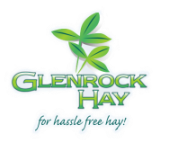Horses are hard on pastures. Unlike cattle, horses have upper incisors and mobile lips which enable them to selectively and heavily graze pastures. “Horse” pastures are easily recognized because they have alternating areas of heavily and lightly grazed pasture. This pattern is referred to as “lawns” and “rough”.
A large proportion of the Australian horse population is owned and managed on small land holdings ranging from one to four hectares, many of which become seriously degraded by continuous grazing by horses. This is likely to result in “horse sick” pastures, soil erosion and compaction, and severe soil mineral imbalances by nutrient transfer between grazed “lawns” and dunging “roughs”.
Horses are hard on pastures. Unlike cattle, horses have upper incisors and mobile lips which enable them to selectively and heavily graze pastures. “Horse” pastures are easily recognized because they have alternating areas of heavily and lightly grazed pasture. This pattern is referred to as “lawns” and “rough”.
Many commercial beef properties also run their horses in designated horse paddocks. Problems similar to those on small holdings can occur in these pastures.
The owners of small land holdings face the greatest challenge in achieving a desirable level of pasture feeding, simply because they lack adequate land area and/or have too many horses to allow paddocks to be rotated effectively enough to prevent degradation. In these cases it is invariably better to confine individual horses to small yards and to maximise the pasture area available on the remainder of the land.
The pasture are should be subdivided with temporary fences and individual horses allowed a period at pasture each day, either singly or in company, depending on paddock size and the nature of the individual horses. As with larger holdings, paddocks should be rotated on a regular basis to avoid overgrazing and to allow the pasture to recover.
Cattle can be used to even out the grazing in horse paddocks, especially if used in rotation on a seasonal basis. This may also aid in breaking parasite cycles. Fire also has a role in native pastures.
Through careful pasture management, each horse may have the benefit of pasture feeding while the grazing impact on the pasture base is kept at an acceptable level. The length of the grazing period and the number of horses grazed can be adjusted according to seasonal conditions to maintain the pasture resource.
During periods of drought or slow pasture growth, it may be necessary to exclude horses from the pasture areas completely.
Reproduced entirely from Beef talk Issue 20, Spring/Summer 2005
Horses are hard on pastures. Unlike cattle, horses have upper incisors and mobile lips which enable them to selectively and heavily graze pastures. “Horse” pastures are easily recognized because they have alternating areas of heavily and lightly grazed pasture. This pattern is referred to as “lawns” and “rough”.
Many commercial beef properties also run their horses in designated horse paddocks. Problems similar to those on small holdings can occur in these pastures.
The owners of small land holdings face the greatest challenge in achieving a desirable level of pasture feeding, simply because they lack adequate land area and/or have too many horses to allow paddocks to be rotated effectively enough to prevent degradation. In these cases it is invariably better to confine individual horses to small yards and to maximise the pasture area available on the remainder of the land.
The pasture are should be subdivided with temporary fences and individual horses allowed a period at pasture each day, either singly or in company, depending on paddock size and the nature of the individual horses. As with larger holdings, paddocks should be rotated on a regular basis to avoid overgrazing and to allow the pasture to recover.
Cattle can be used to even out the grazing in horse paddocks, especially if used in rotation on a seasonal basis. This may also aid in breaking parasite cycles. Fire also has a role in native pastures.
Through careful pasture management, each horse may have the benefit of pasture feeding while the grazing impact on the pasture base is kept at an acceptable level. The length of the grazing period and the number of horses grazed can be adjusted according to seasonal conditions to maintain the pasture resource.
During periods of drought or slow pasture growth, it may be necessary to exclude horses from the pasture areas completely.
Reproduced entirely from Beef talk Issue 20, Spring/Summer 2005

 RSS Feed
RSS Feed
